What are invasive weeds?
Invasive weeds are plants that grow, spread aggressively, and will out-compete and cause harm to native vegetation, destroy natural animal habitat, and compete for scarce water resources. Use this weed guide to help identify our area’s worst weeds. Then, join us in preventing, controlling, and reducing invasives as you care for your own piece of Central Oregon.
What should I do once I’ve pulled them?
Because the common weeds in Central Oregon spread competitively, pulling them once is often not the end of the story. Some weeds like cheatgrass will need to be controlled year after year to reduce the seed bank. Removing weeds before they have gone to seed (before they bloom) can slow their reproduction. When pulling the weeds, be sure to wear gloves, put the weeds into a bag and dispose of at the Deschutes County Landfill. If you are pulling weeds after they bloom it's important to bag them so they can no longer disperse their seed.
Here are five of the most invasive Central Oregon weeds to get you started:
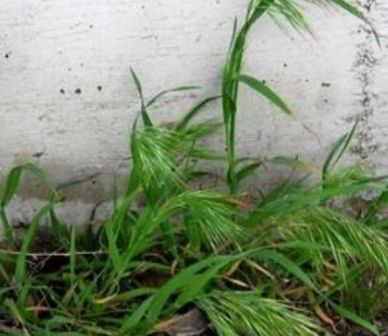
Cheatgrass (Bromus tectorum):
This invasive weed is originally from the Mediterranean region and is dominating millions of acres in the American West.
Cheatgrass can be 6 to 24 inches tall with bright green leaves and nodding seed heads. After maturing in the late spring, cheatgrass becomes a fire hazard and outcompetes Central Oregon native bunchgrasses.
Hand pulling or hoeing before seeds are produced will reduce infestation.
Blooms: late spring
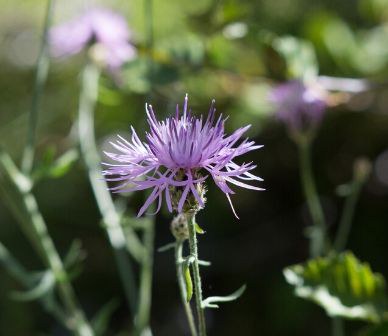
This invasive weed has spread through rangeland in the western United States and Canada. Spotted knapweed has been recorded to occupy over 95% of available plant habitat.
Spotted knapweed can be 2-4 feet in height with multiple upright stems and an elongated taproot. Leaves will be a pale grayish green. Flower heads are pinkish-purple with a spotted appearance.
Remember, if you are pulling spotted knapweed after it has flowered, to be sure to bag your weeds.
Blooms: summer
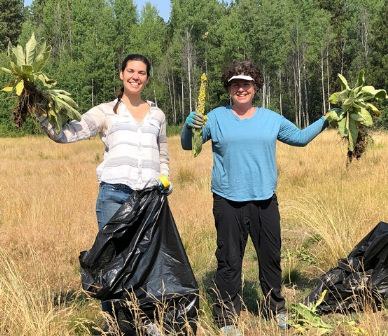
Mullein (Verbascum thapsus):
This invasive weed begins as a rosette then can grow more than 6 feet tall. Mullein can quickly overtake and displace native species, releasing over 100,000 seeds from each parent plant. Mullein has soft, fuzzy leaves in a rosette during their first year and blooms into tall yellow heads in their second year.
Hand pulling rosettes can prevent seed dispersal. If you pull after the mullein has produced a flower, be sure to bag its seed head carefully.
Blooms: summer
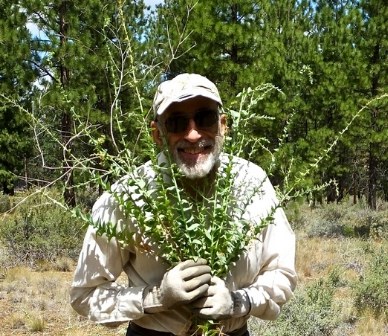
Dalmatian toadflax (Linaria dalmatica):
This invasive weed is highly aggressive and can be found in varied conditions. Dalmation toadflax has narrow, upright stems and bright yellow flowers resembling a snapdragon. Hand pulling before these weeds flower can help reduce their reproduction.
Blooms: mid-summer
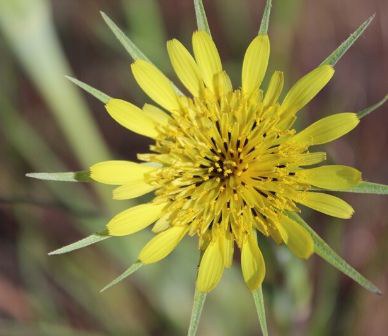
This invasive weed is also known as goat’s beard. Salsify have yellow flowers that open in the morning light and close in the afternoon sun. Their seed heads resemble over-sized dandelions. Hand pull before they’ve gone to seed.
Blooms: summer
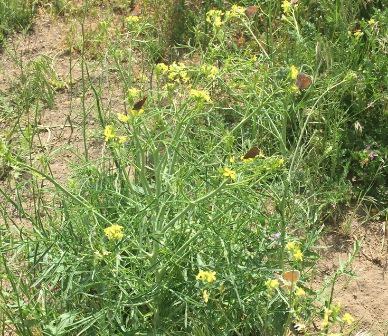
This invasive weed will have 2-3 foot tall branching stems with small yellow flowers. Upper leaves are fine and are known for breaking off and rolling. Tumble mustard will begin its life as a rosette close to the ground. Hand pull the seedlings.
Blooms: late spring-summer
With these suggestions, you can help improve native plant habitat in Central Oregon! Happy weeding!
Learn more:
- Native pollinator plants to grow in Central Oregon
- Join the Weed Warriors, sign up to volunteer with us!
- Creating a Butterfly Garden
- Plant native milkweed for monarch butterflies!
- Explore other invasive weeds in Deschutes County
- Get the Crook County Homeowners Weed Control Handbook
- View additional photos and get help with weed identification on the Invasive Plant Atlas


